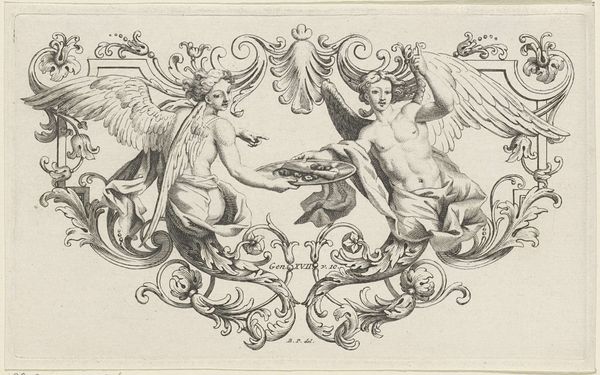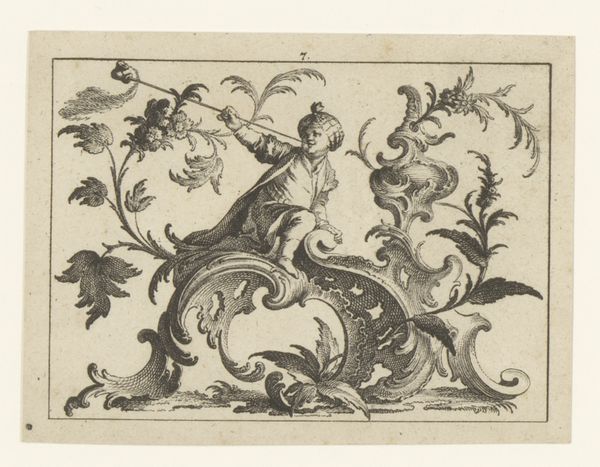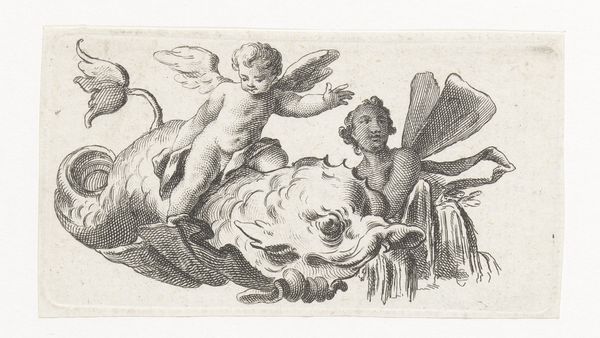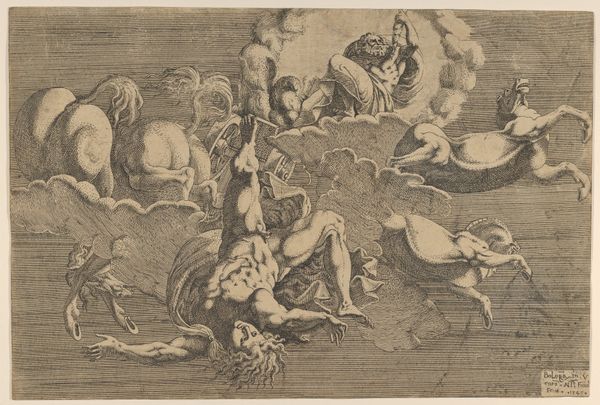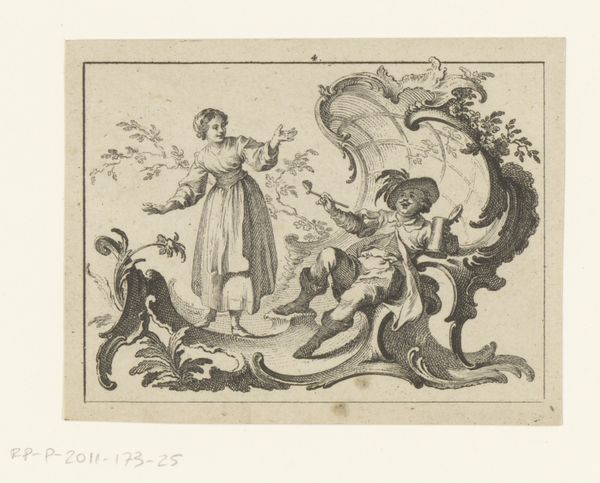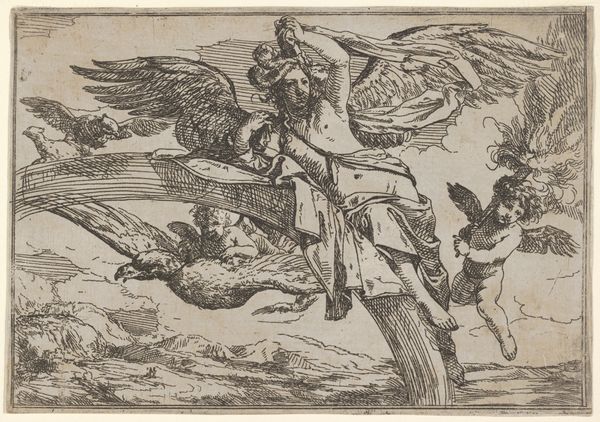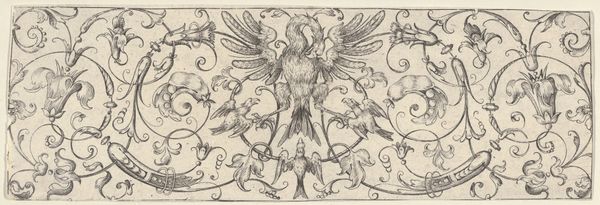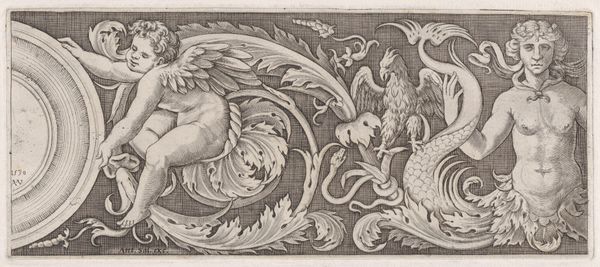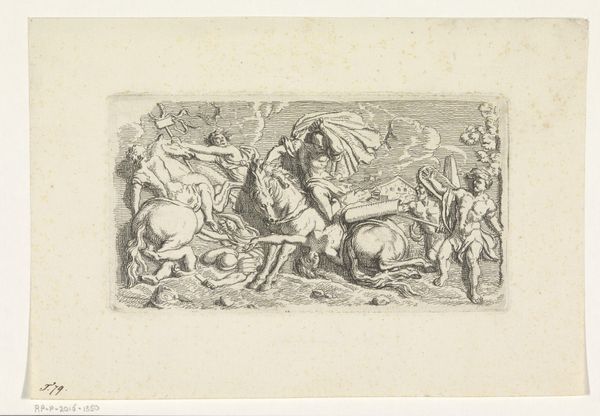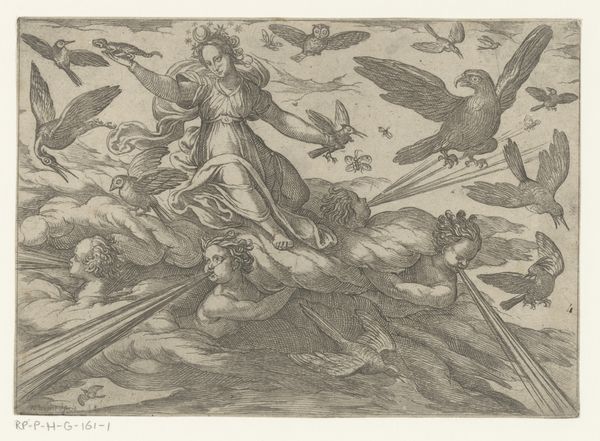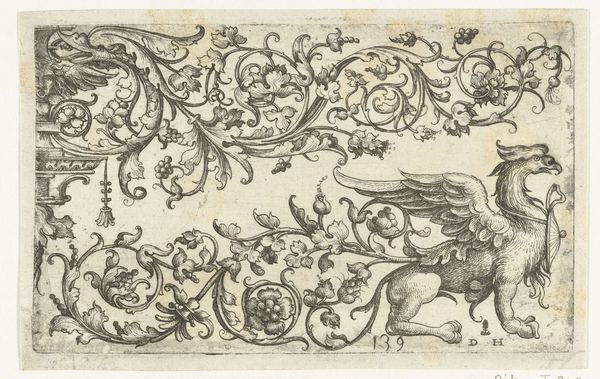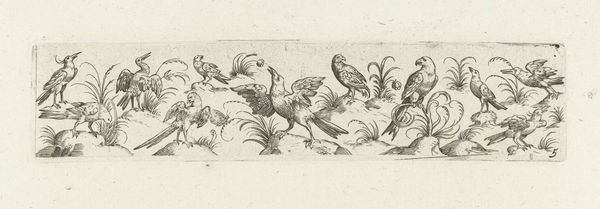
print, ink, engraving
#
pen drawing
# print
#
figuration
#
ink line art
#
11_renaissance
#
ink
#
line
#
northern-renaissance
#
engraving
Dimensions: height 45 mm, width 179 mm
Copyright: Rijks Museum: Open Domain
Editor: Here we have "Ornament met putti op vogels", an engraving in ink, made sometime between 1525 and 1590 by Pierre Eskrich. I'm struck by the fantastic quality of it, like a little dreamscape across the page. What stands out to you about this work? Curator: The fantastic element is key. Ornament prints like this were hugely influential in disseminating artistic ideas across Europe. Think of them as early forms of pattern books or even…memes. Editor: Memes? So, this image was copied and re-interpreted? Curator: Exactly! These images of putti, or cherubic figures, and fanciful creatures, weren't just decorative. They were carriers of cultural values. The putti, derived from classical imagery, represent idealized beauty, while the birds… are they swans? Editor: They seem to be swans… with some other bird-like creatures too! Curator: Notice the context: Renaissance Europe was rediscovering classical art and literature, resulting in new interpretations of Greco-Roman gods. Prints like this acted as a bridge. Consider the labor, materials and artistry which went into this type of work. What sort of patron or institution would support this production? Editor: So, these images helped to democratize artistic styles and allowed those images to proliferate in society at the time. Curator: Yes. It offered up accessible models for artists and artisans in a rapidly changing visual landscape. Think of them as foundational for so much Renaissance imagery. Editor: Wow, that’s a great way to consider its lasting contribution and function! Thanks so much!
Comments
No comments
Be the first to comment and join the conversation on the ultimate creative platform.
